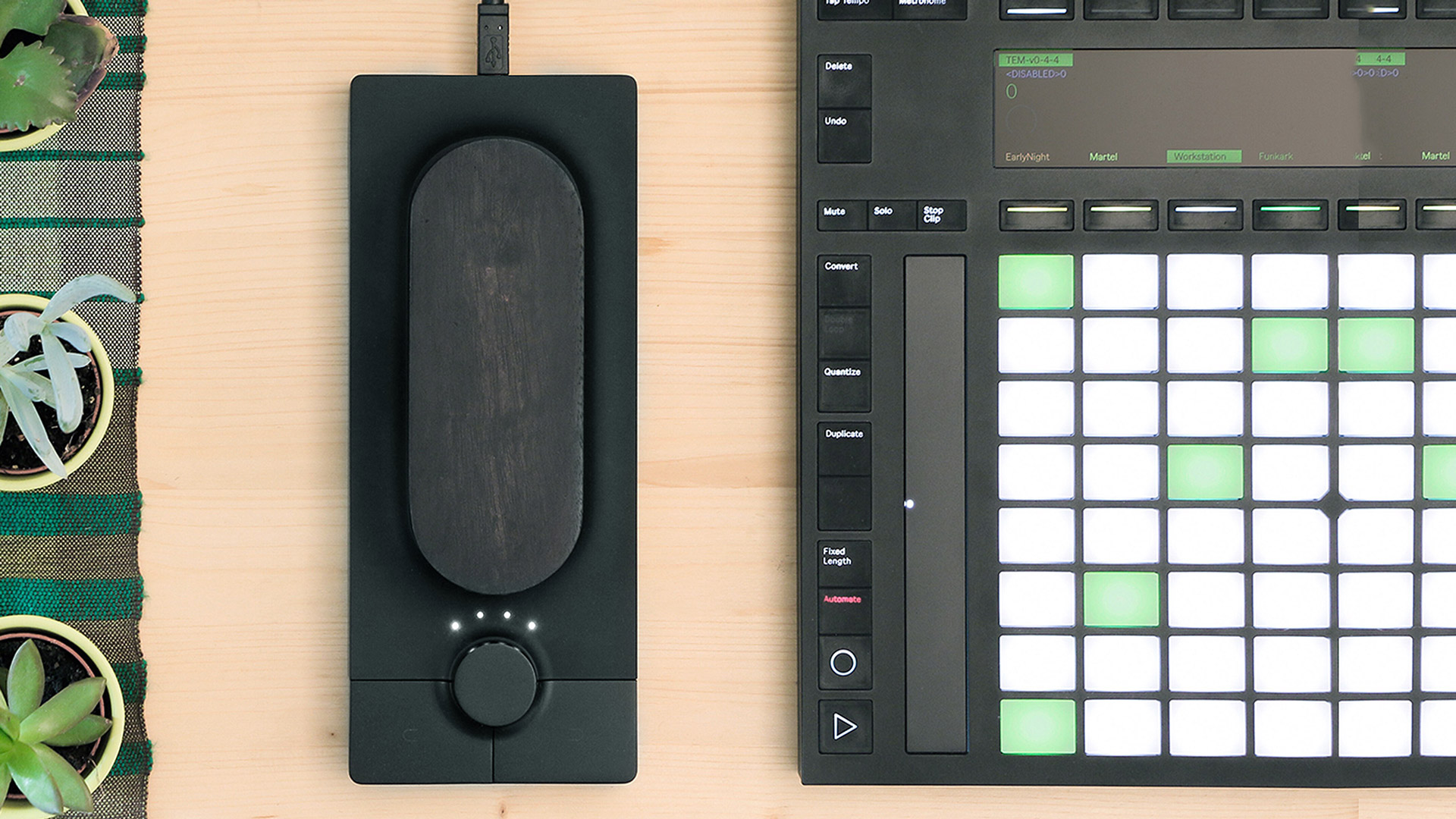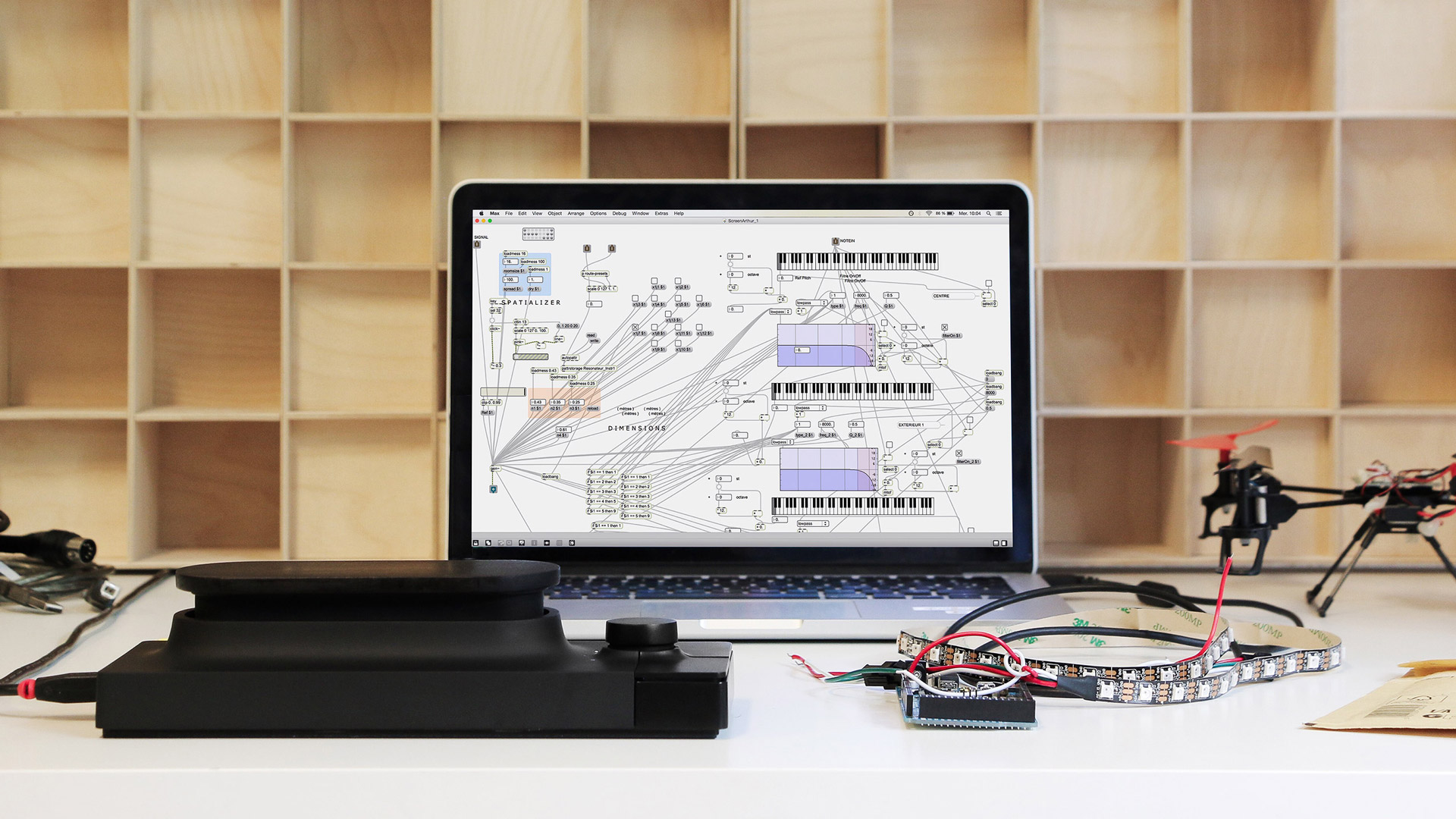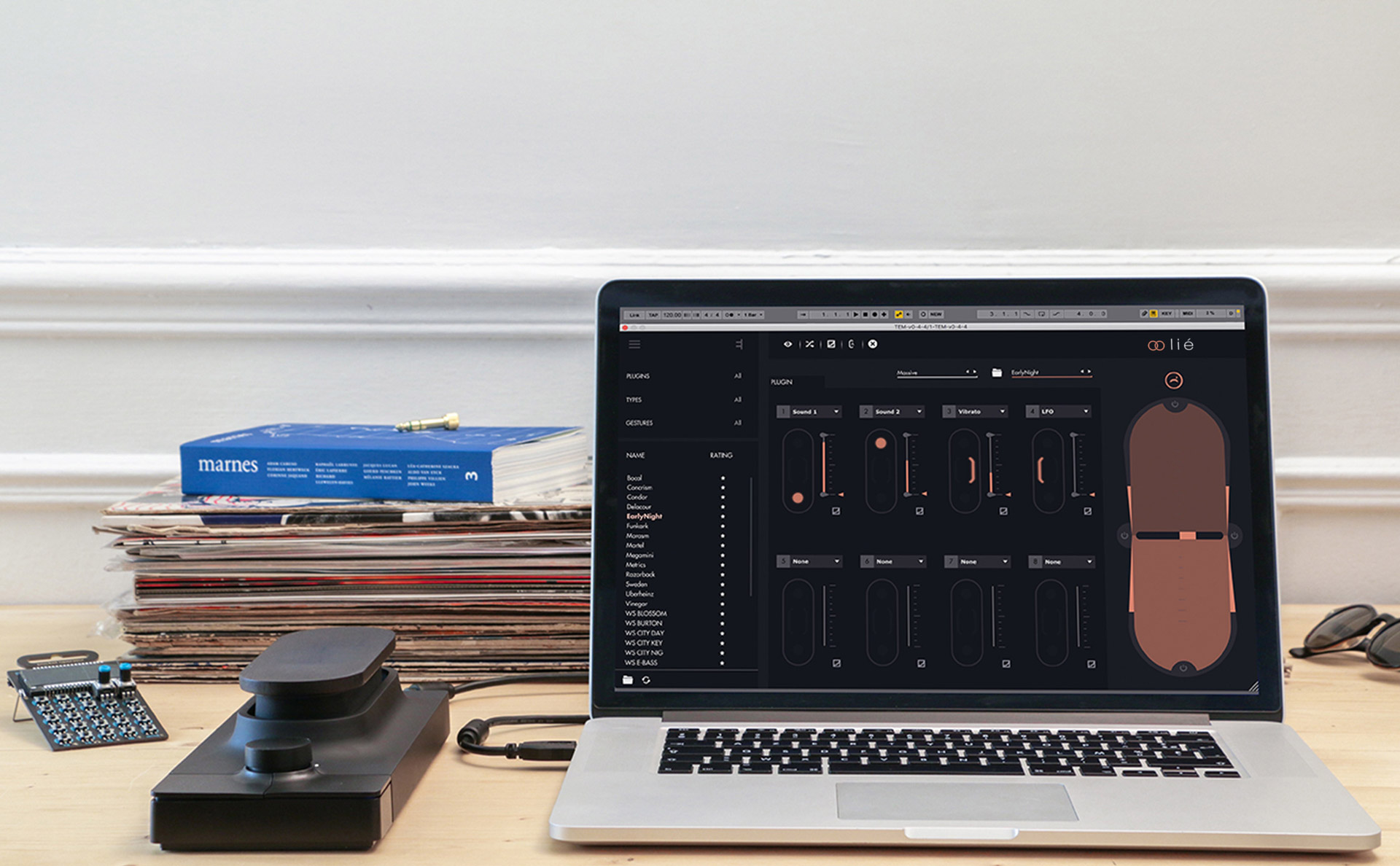Review: Touché
Expressive E drops a unique MIDI controller built for performance.

Easily one of the more unique MIDI controllers released in recent memory, the Touché brings to the table a host of new ideas for creating and interacting with electronic sounds. The product is the first from French studio Expressive E, and the device can be used to control or extend any number of instruments and their parameters, fitting equally well in the studio as it does on the stage. Because it’s been built for computers and all manner of production hardware, it’s a handy multi-tool for sound creation and modulation.
How it Looks
A tad shy of a foot in length, the Touché is built from wood and high-quality, rubberized plastics. The round, playable wooden surface moves around above the base on a complex hinge system, which lets you move it around using four dimensions of pressure: it tilts and bends both vertically and horizontally, creating an interaction that sits somewhere between a touchscreen, a theremin, and a pedal (but not exactly like any of those things, really).
Below the playable surface is a selection wheel and two buttons, used to configure the device and switch between interaction settings on-the-fly. On the back are a number of ports: USB for connecting to your computer, MIDI I/O for controlling outboard devices, and four CV outputs to connect to a modular setup. It’s worth noting that Touché is Mac-only for the moment; PC compatibility is coming soon. Under the wooden cover are more granular controls, which let you dial in varying levels of force feedback and its degree of lateral movement.
Touché also benefits from having a very small footprint, which lets you throw it in a bag along with whatever gear you’re looking to use it with. In addition to some commonalities in terms of functionality (multi-dimensional touch interfaces), the sophisticated look and feel of rubberized, matte black materials bring to mind Roli’s growing product line.

How it Plays
Touché is extremely well-constructed and feels great to play, harnessing much of the depth of an acoustic instrument for application in the electronic domain. The top panel is extremely sensitive, accommodating everything from a gentle graze to a firm, sustained press. Checking out some of the company’s demo videos is a good way to see exactly what this thing can do; playable with one or two hands, Touché is adept at everything from striking notes to manually modulating time-based changes like filter cutoffs and delay times (or any other parameters you can think of), often simultaneously. It feels very much like an instrument, either as the main focus of the performer or as a modifier for the instrument(s) by its side.
With its four discreet CV controls, Touché feels especially at home next to a modular synth. Rather than being limited to knobs or sliders for manual interaction, Touché provides an interface for “playing” modular parameters that’s unlike anything I’ve tried. You’re able to set up the device ahead of time with custom response curves and sensitivity settings, making it feel deeply integrated with a given patch. And, because it saves these settings to internal memory, you’re able to use it with modular or other outboard gear without a computer anywhere in sight.
Expressive E’s Lié software is used to manage these configurations, and Lié can also function as a host for VST or AU instruments; it comes with a UVI Workstation library with loads of sound patches, and easily integrates with your existing plug-ins. Lié can also be used to easily configure the Touché for hardware synthesizers; pretty much anything with MIDI input will work, and Expressive E has included preset controls for an extensive number of existing synthesizers that continues to grow.
While the options are vast, common uses for Touché include pitch bend, control of filter cutoff and FX mixes, and just about any kind of “sweep” effect. You can also map more than one parameter to a given dimension, letting you perform extreme, dynamic changes with single gestures.

The Bottom Line
Touché is the rare “alternative controller” that’s actually quite easy to integrate into an existing workflow. For piano players, it comfortably sits next to a synthesizer or MIDI keyboard for expressive control of the sound, and for modular users, it’s as easy as patching the outputs to whichever parameters are desired. It’s not cheap, but feels like it earns its cost of entry; for the price of a (nice) synth module, Touché is a forward-thinking device that enables new ways of interacting with your music hardware and software.
Price: $399

